Solar eclipse of May 20, 2050
| Solar eclipse of May 20, 2050 | |
|---|---|
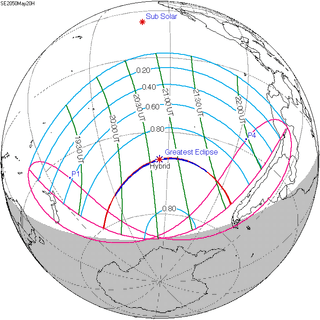 Map | |
| Type of eclipse | |
| Nature | Hybrid |
| Gamma | -0.8688 |
| Magnitude | 1.0038 |
| Maximum eclipse | |
| Duration | 21 sec (0 m 21 s) |
| Coordinates | 40°06′S 123°42′W / 40.1°S 123.7°W |
| Max. width of band | 27 km (17 mi) |
| Times (UTC) | |
| Greatest eclipse | 20:42:50 |
| References | |
| Saros | 148 (23 of 75) |
| Catalog # (SE5000) | 9619 |
A total solar eclipse will occur on May 20, 2050. It is a hybrid event, being short duration total eclipse for a middle portion of its path, starting and ending as an annular eclipse. A solar eclipse occurs when the Moon passes between Earth and the Sun, thereby totally or partly obscuring the image of the Sun for a viewer on Earth. An annular solar eclipse occurs when the Moon's apparent diameter is smaller than the Sun's, blocking most of the Sun's light and causing the Sun to look like an annulus (ring). An annular eclipse appears as a partial eclipse over a region of the Earth thousands of kilometres wide.
Related eclipses
Solar eclipses 2047-2050
Each member in a semester series of solar eclipses repeats approximately every 177 days and 4 hours (a semester) at alternating nodes of the Moon's orbit.
Note: Partial lunar eclises on January 26, 2047 and July 22, 2047 occur on the previous lunar year eclipse set.
| Solar eclipse sets from 2047-2050 | ||||
|---|---|---|---|---|
| Ascending node | Descending node | |||
| 118 | June 23, 2047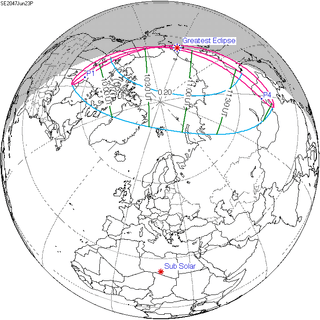 Partial |
123 | December 16, 2047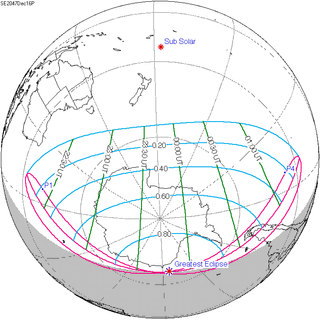 Partial | |
| 128 | June 11, 2048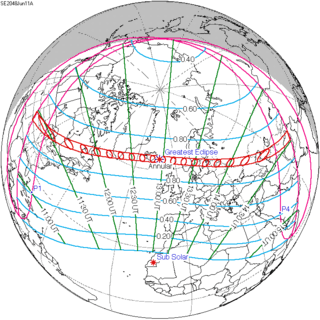 Annular |
133 | December 5, 2048 Total | |
| 138 | May 31, 2049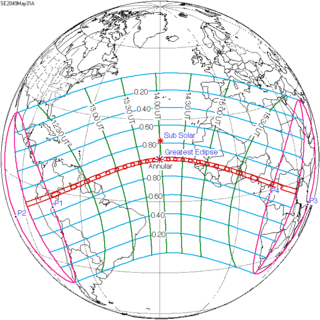 Annular |
143 | November 25, 2049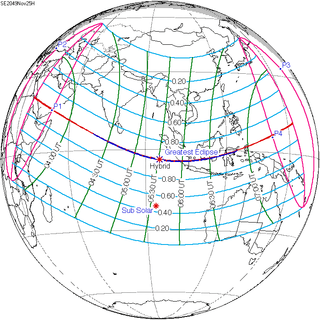 Hybrid | |
| 148 | May 20, 2049 Hybrid |
153 | November 14, 2050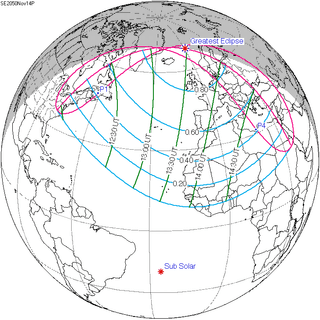 Partial | |
Metonic series
| Octon series with 21 events between May 21, 1993 and August 2, 2065 | ||||
|---|---|---|---|---|
| May 20–21 | March 9 | December 25–26 | October 13–14 | August 1–2 |
| 118 | 120 | 122 | 124 | 126 |
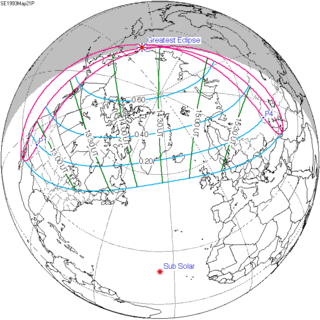 May 21, 1993 |
 March 9, 1997 |
 December 25, 2000 |
 October 14, 2004 |
 August 1, 2008 |
| 128 | 130 | 132 | 134 | 136 |
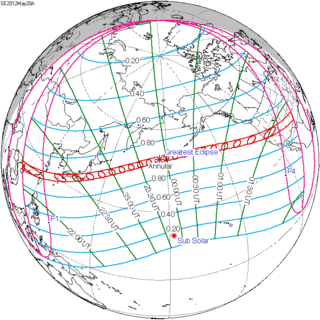 May 20, 2012 |
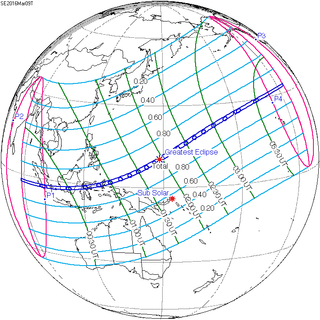 March 9, 2016 |
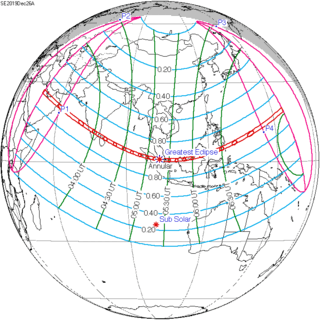 December 26, 2019 |
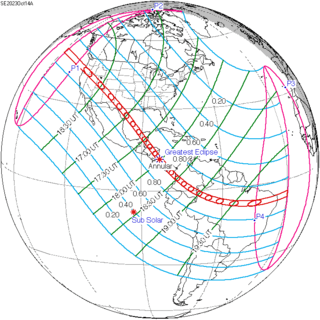 October 14, 2023 |
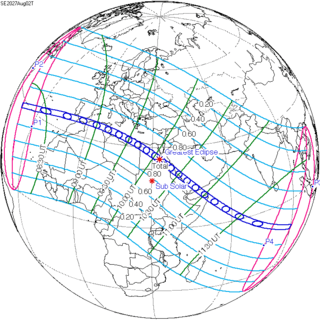 August 2, 2027 |
| 138 | 140 | 142 | 144 | 146 |
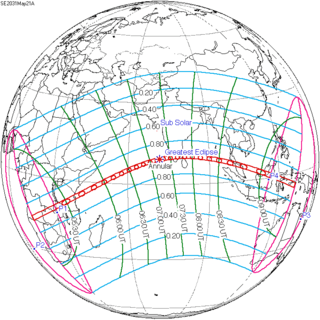 May 21, 2031 |
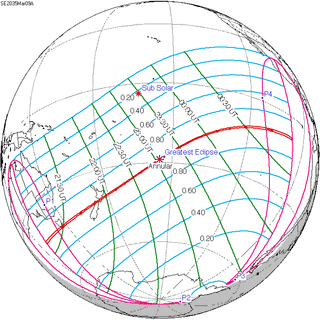 March 9, 2035 |
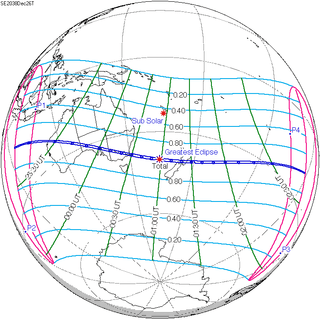 December 26, 2038 |
 October 14, 2042 |
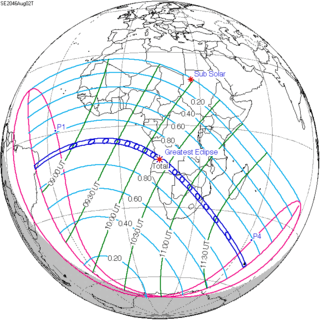 August 2, 2046 |
| 148 | 150 | 152 | 154 | 156 |
 May 20, 2050 |
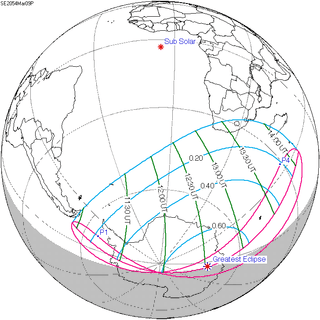 March 9, 2054 |
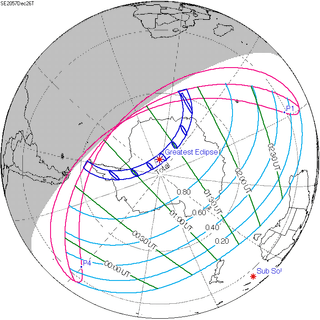 December 26, 2057 |
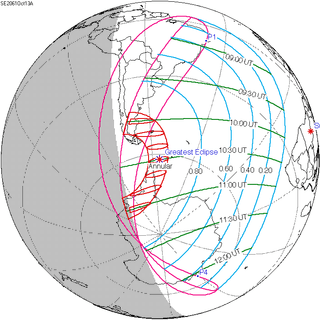 October 13, 2061 |
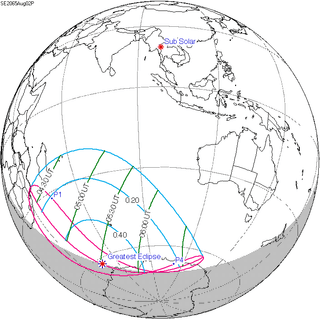 August 2, 2065 |
| 158 | ||||
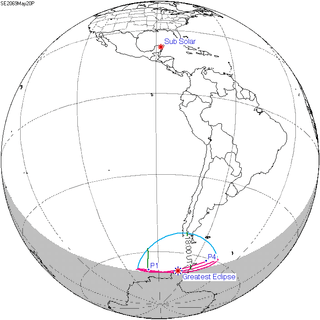 May 20, 2069 | ||||
Notes
References
- Earth visibility chart and eclipse statistics Eclipse Predictions by Fred Espenak, NASA/GSFC
